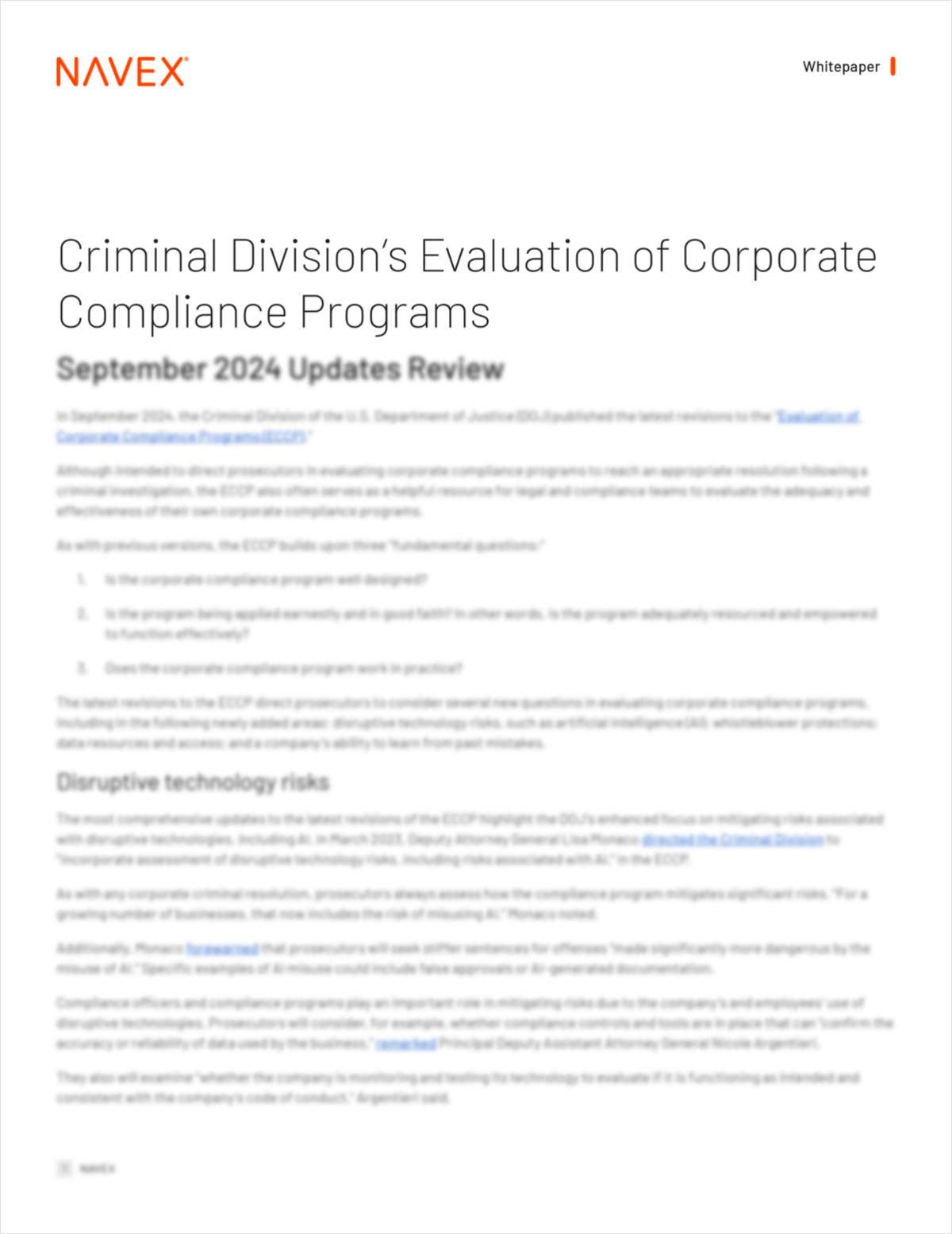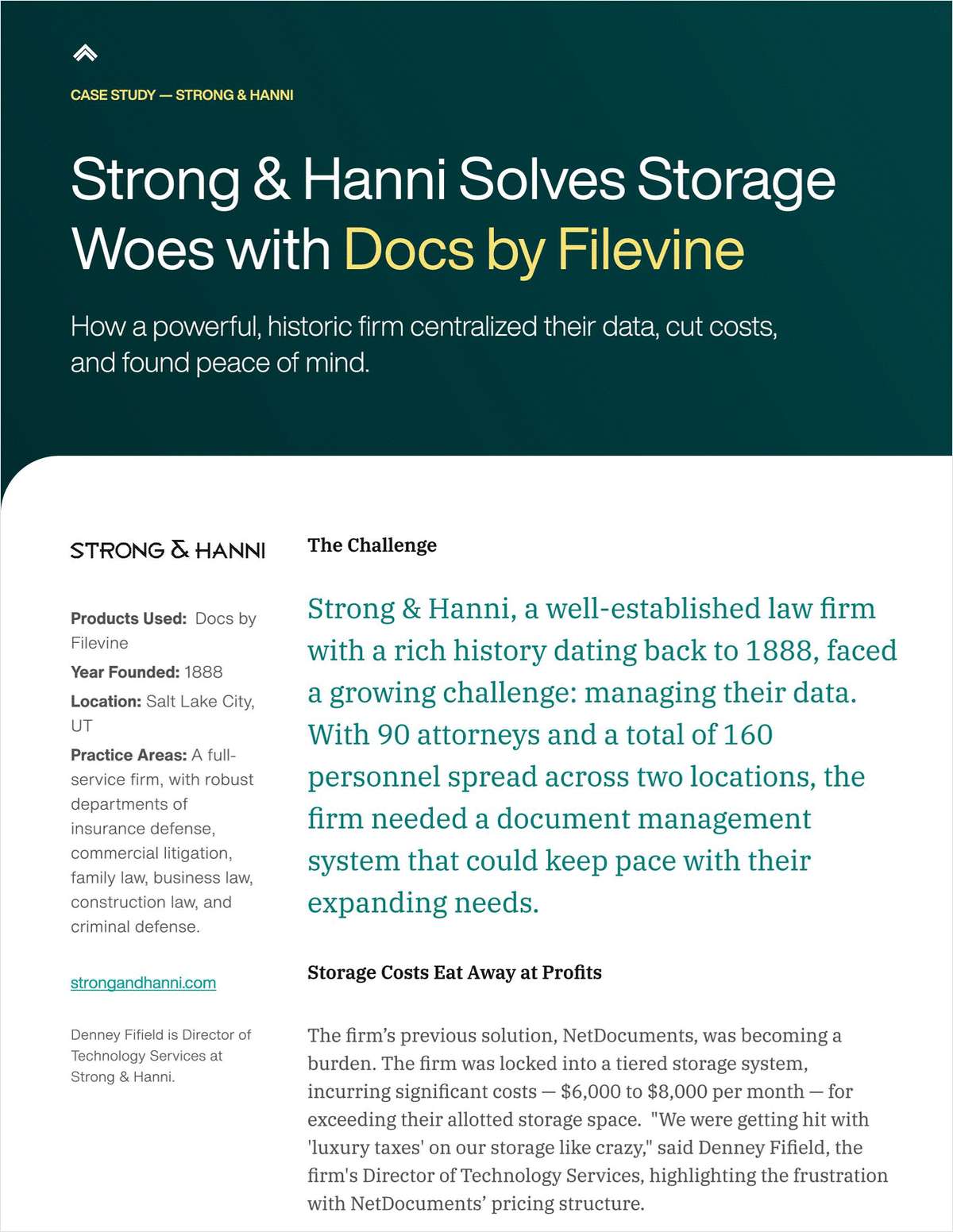 Bigstock
BigstockGulf Increases Between NY and NJ Insurance Coverage Law
The 'Honeywell' and 'Keyspan' decisions starkly demonstrate the fundamental difference in insurance philosophy between the two states.
August 23, 2018 at 10:00 AM
8 minute read
The original version of this story was published on New Jersey Law Journal
In the space of three months, the highest courts of New York and New Jersey took diametrically and dispositively opposed positions with respect to a critical issue in insurance coverage for long-term injury cases, such as asbestos and environmental liability. The issue is the “unavailability rule,” an arcane issue of insurance law that will affect the allocation between policyholders and insurance companies of probably billions of dollars. Moreover, the conflicting decisions starkly demonstrate the fundamental difference in insurance philosophy between the two states.
|The Unavailability Rule
The unavailability rule concerns the situation where the insurance industry places an absolute exclusion in the standard liability policy, yet the injury continues after that date. For example, Continental Insurance Co. v. Honeywell International (078152) (N.J. 2018), concerned asbestos injury. In 1987, the insurance industry added an asbestos exclusion to the standard policy. If a worker was exposed to asbestos in 1960 but the resulting injury did not manifest until 2010, the issue arises as to whether the policyholder or the pre-1987 insurance companies are responsible for the period between 1987 and 2010.
In KeySpan Gas East Corp. v. Munich Reinsurance America, 96 N.E. 2d 209 (2018), the New York Court of Appeals held that a policyholder in a similar situation bore responsibility—that is, to clean up contamination at its gas plants attributed to years when no pollution liability insurance was available. The court based its ruling strictly on the policy language: “the unavailability rule is inconsistent with the contract language.” The court went on to say that those courts that adopted the “unavailability rule” “have done so by relying heavily on public policy concerns and a desire to maximize resources available to claimants against the policyholder.”
In Honeywell, the New Jersey Supreme Court upheld the unavailability rule and did indeed base its ruling on public policy, as set forth in the seminal decision in Owens-Illinois v. United Insurance Co., 138 N.J. 437 (1994). Owens-Illinois involved asbestos personal injury and property damage claims. The court examined the insurance policies and developing case law, and found them unhelpful, essentially throwing up its hands and clearing the field for public policy considerations to be dispositive. The Honeywell court relied on Owens-Illinois and looked to public policy. It reasoned that “simple justice” dictated that the courts should not penalize the policyholder if no insurance was available to buy.
The unavailability rule controls vast amounts of money. Assume that asbestos exposure occurred in 1968 and manifestation took place in 2018. In New Jersey, the policyholder could receive full coverage from its 1968-1987 insurance policies. In New York, the policyholder would receive only 38 percent.
|Late Notice
The unavailability rule is just the latest of several issues in long-term injury cases on which the courts of New York and New Jersey have reached opposite conclusions. New Jersey requires that an insurance company demonstrate “appreciable prejudice” before late notice will deny coverage, a standard that insurance companies can rarely meet. Cooper v. GEICO, 237 A. 2d 870 (N.J. 1968). This too was a public policy based decision, involving the avoidance of the forfeiture of insurance coverage. While New York passed a statute in 2008 mandating a prejudice standard for late notice, the statute is not retroactive. Insurance Law Section 3420. Thus, in a long-term injury case, late notice under New York law can cost policyholders coverage under pre-2008 policies.
|Pollution Exclusion
The pollution exclusion is another issue of dramatic difference between the two states. The insurance industry placed the “sudden and accidental” pollution exclusion in the standard general liability in about 1973, and replaced it with an absolute exclusion in 1986. New York enforces the sudden and accidental exclusion to apply to any “gradual” pollution, so that essentially there is no coverage for environmental liability post-1973 under New York law. Technicon Electronics Corp. v. American Home Assurance Co., 542 N.E. 2d1048 (N.Y. 1989). New Jersey has essentially nullified the sudden and accidental exclusion through the doctrine of regulatory estoppel, so that coverage for gradual pollution continues until 1986. As in New York, the Supreme Court held that “sudden and accidental” had a temporal connotation and did not apply to gradual pollution. However, the court then found that the insurance industry had misrepresented the scope of the exclusion in its filings with the New Jersey Department of Insurance. As a result, the court held that the insurance industry was estopped from enforcing the sudden and accidental pollution exclusion. Morton International v. Aetna Casualty & Surety Co., 629 A. 2d 831 (N.J. 1993).
|Allocation
Allocation is another issue with a stark contrast between the two states. Under New York law, if an injury lasts from 1960 to 2000, each policy year pays 2.5 percent. If the policyholder cannot locate its insurance policies from 1960 to 1990, it only receives 25 percent coverage. New Jersey allocates by both years and policy limits. Carter-Wallace v. Admiral Insurance Co., 712 A, 2d 1116 (N.J. 1998). In later years, policyholders purchased far more insurance coverage than in earlier years. If a policyholder purchased $1 million of insurance in year one, and $9 million in year two, the year-two policy is allocated 90 percent of the liability. A company may have purchased $10,000 in coverage in 1960, and $10 million of coverage in 1990. As a result, in the above example, the policyholder may have 75 percent or more coverage because the policy limits from 1990 to 2000 would be so much higher than in the earlier missing years.
|Choice of Law
The above analysis demonstrates that both policyholders and insurance companies must place a premium on choice of law and choice of forum in long-term injury cases. Which state's law applies is often dispositive. Choice of law is another area where New York and New Jersey differ significantly. While both apply the Restatement and utilize a multi-factored approach, New York courts normally apply the law of the place of contracting. Certain Underwriters at Lloyd's v. Foster Wheeler Corp., 822 N.Y.S. 2d 30 (Sup. Ct. App. Div. 2006). New Jersey first moved away from the place of contracting rule with respect to environmental insurance. The state's Supreme Court held that the location of the hazardous waste site controlled choice of law, once again based on the New Jersey public policy of remediating hazardous waste sites within its borders. Gilbert Spruance Co. v. Pennsylvania Manufacturers' Association Insurance Co., 134 N.J. 96 (1993).
The Third Circuit recently applied New Jersey choice of law rules in Mega Construction Corp. v. XL America Group, 4-11-2017 (3d Cir. 2017). The case concerned a New Jersey headquartered company engaged in a construction project in Pennsylvania, where the accident occurred. The court applied Pennsylvania law, evidencing a further shift away from the location of the policyholder to the location of the tort.
Honeywell muddled the choice of law picture. Honeywell concerned two insurance policies issued to Bendix Corporation in the 1970s. The insurance policies were negotiated and delivered to Bendix in Michigan. Allied-Signal, headquartered in New Jersey, acquired Bendix in 1983; Allied Signal later acquired Honeywell and changed its name. The court applied New Jersey law to the Bendix policies, which maximized coverage. The court looked to Bendix's pre-1983 ties to New Jersey and the fact that the performance of the insurance policies—i.e., payment—took place in New Jersey.
|Choice of Forum
In insurance coverage cases where two different states could serve as the forum state, seizing the forum that best benefits a party is critical. Great American Insurance Co. v. Ace American Insurance Co., no. 4:18-cv-001114 (N.D. Tex. 2018) is illustrative. This case concerned an action against a company by the New Jersey Department of Environmental Protection involving stream pollution. The company's parent was located in Texas, which was where the insurance policies were entered into. The policyholder made an insurance claim. If suit was brought in New Jersey, New Jersey law would apply, and coverage would lie. If suit were brought in Texas, Texas law would apply and there would not be coverage. The insurance company sued first in Texas, and the policyholder lost coverage.
Insurance coverage concerns numerous legal issues, and the law on each issue differs among jurisdictions. New York law allocates by years on the risk, while New Jersey law allocates on the basis of both years and limits. Pennsylvania, on the other hand, is an “all sums” state, where the policyholder can collect all of its damages under any one policy year. New York and Pennsylvania enforce the “sudden and accidental” pollution exclusion, while New Jersey does not. Late notice is rarely a coverage factor in New Jersey, but can be fatal in states such as Georgia and Illinois.
|Conclusion
Thus, choice of forum is dictated by choice of law, and choice of law is often unpredictable or involves a balancing of several factors. Attorneys must carefully analyze these issues when confronted with a long-term injury claim that can be brought in multiple jurisdictions.
Robert D. Chesler is a shareholder in Anderson Kill's Newark office and a member of the Insurance Recovery Group.
This content has been archived. It is available through our partners, LexisNexis® and Bloomberg Law.
To view this content, please continue to their sites.
Not a Lexis Subscriber?
Subscribe Now
Not a Bloomberg Law Subscriber?
Subscribe Now
NOT FOR REPRINT
© 2024 ALM Global, LLC, All Rights Reserved. Request academic re-use from www.copyright.com. All other uses, submit a request to [email protected]. For more information visit Asset & Logo Licensing.
You Might Like
View All
Requiring COVID-19 Vaccinations in the Workplace: A Guide for NJ Employers
9 minute read


Trending Stories
- 1Infant Formula Judge Sanctions Kirkland's Jim Hurst: 'Overtly Crossed the Lines'
- 2Election 2024: Nationwide Judicial Races and Ballot Measures to Watch
- 3Guarantees Are Back, Whether Law Firms Want to Talk About Them or Not
- 4How I Made Practice Group Chair: 'If You Love What You Do and Put the Time and Effort Into It, You Will Excel,' Says Lisa Saul of Forde & O'Meara
- 5Abbott, Mead Johnson Win Defense Verdict Over Preemie Infant Formula
- 6How Much Does the Frequency of Retirement Withdrawals Matter?
Who Got The Work
Michael G. Bongiorno, Andrew Scott Dulberg and Elizabeth E. Driscoll from Wilmer Cutler Pickering Hale and Dorr have stepped in to represent Symbotic Inc., an A.I.-enabled technology platform that focuses on increasing supply chain efficiency, and other defendants in a pending shareholder derivative lawsuit. The case, filed Oct. 2 in Massachusetts District Court by the Brown Law Firm on behalf of Stephen Austen, accuses certain officers and directors of misleading investors in regard to Symbotic's potential for margin growth by failing to disclose that the company was not equipped to timely deploy its systems or manage expenses through project delays. The case, assigned to U.S. District Judge Nathaniel M. Gorton, is 1:24-cv-12522, Austen v. Cohen et al.
Who Got The Work
Edmund Polubinski and Marie Killmond of Davis Polk & Wardwell have entered appearances for data platform software development company MongoDB and other defendants in a pending shareholder derivative lawsuit. The action, filed Oct. 7 in New York Southern District Court by the Brown Law Firm, accuses the company's directors and/or officers of falsely expressing confidence in the company’s restructuring of its sales incentive plan and downplaying the severity of decreases in its upfront commitments. The case is 1:24-cv-07594, Roy v. Ittycheria et al.
Who Got The Work
Amy O. Bruchs and Kurt F. Ellison of Michael Best & Friedrich have entered appearances for Epic Systems Corp. in a pending employment discrimination lawsuit. The suit was filed Sept. 7 in Wisconsin Western District Court by Levine Eisberner LLC and Siri & Glimstad on behalf of a project manager who claims that he was wrongfully terminated after applying for a religious exemption to the defendant's COVID-19 vaccine mandate. The case, assigned to U.S. Magistrate Judge Anita Marie Boor, is 3:24-cv-00630, Secker, Nathan v. Epic Systems Corporation.
Who Got The Work
David X. Sullivan, Thomas J. Finn and Gregory A. Hall from McCarter & English have entered appearances for Sunrun Installation Services in a pending civil rights lawsuit. The complaint was filed Sept. 4 in Connecticut District Court by attorney Robert M. Berke on behalf of former employee George Edward Steins, who was arrested and charged with employing an unregistered home improvement salesperson. The complaint alleges that had Sunrun informed the Connecticut Department of Consumer Protection that the plaintiff's employment had ended in 2017 and that he no longer held Sunrun's home improvement contractor license, he would not have been hit with charges, which were dismissed in May 2024. The case, assigned to U.S. District Judge Jeffrey A. Meyer, is 3:24-cv-01423, Steins v. Sunrun, Inc. et al.
Who Got The Work
Greenberg Traurig shareholder Joshua L. Raskin has entered an appearance for boohoo.com UK Ltd. in a pending patent infringement lawsuit. The suit, filed Sept. 3 in Texas Eastern District Court by Rozier Hardt McDonough on behalf of Alto Dynamics, asserts five patents related to an online shopping platform. The case, assigned to U.S. District Judge Rodney Gilstrap, is 2:24-cv-00719, Alto Dynamics, LLC v. boohoo.com UK Limited.
Featured Firms
Law Offices of Gary Martin Hays & Associates, P.C.
(470) 294-1674
Law Offices of Mark E. Salomone
(857) 444-6468
Smith & Hassler
(713) 739-1250








